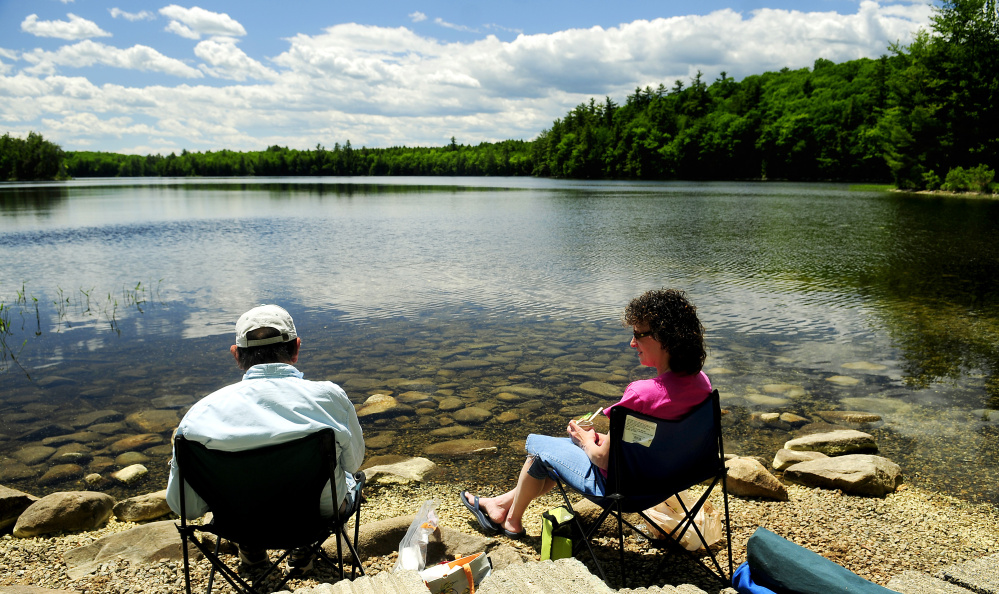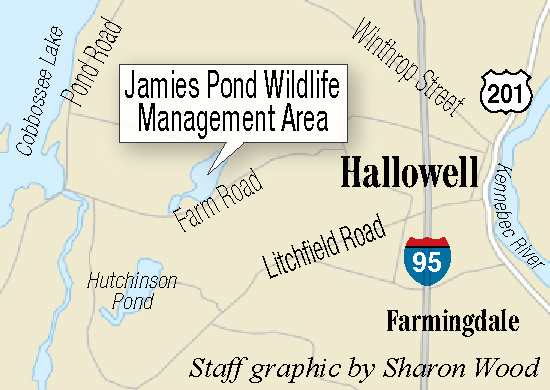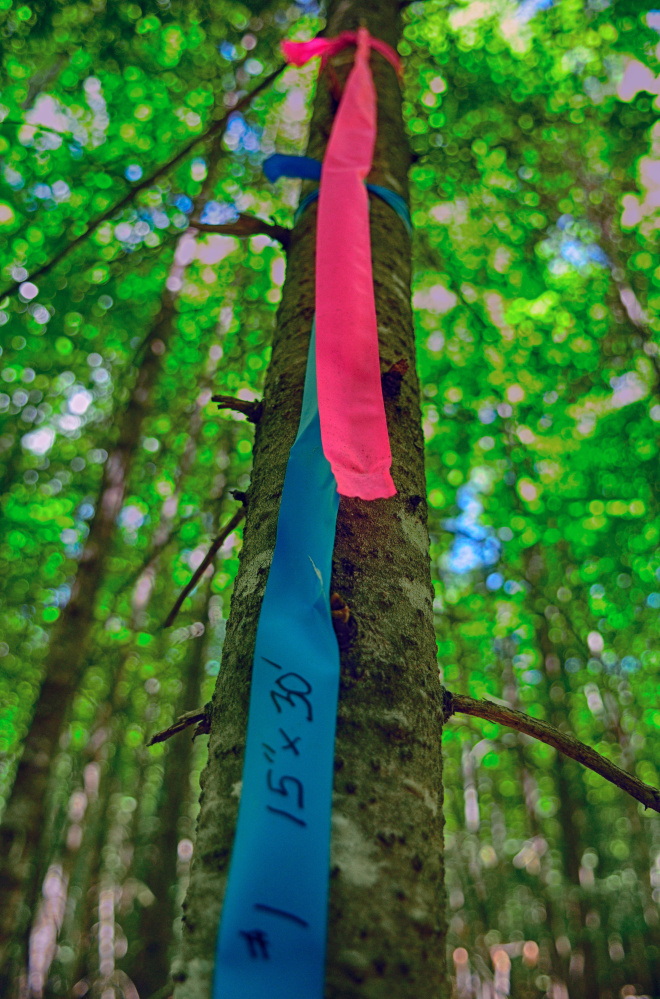HALLOWELL — Timber will be harvested at the Jamies Pond Wildlife Management Area for the first time in more than a decade, prompting questions from residents about the size and scope of the initiative.
The project at the approximately 1,000-acre property in Hallowell, Farmingdale and Manchester is scheduled to begin this summer, according to Ryan Robicheau, wildlife management section supervisor for the Maine Department of Inland Fisheries and Wildlife.
“This comprehensive plan has been developed to put into effect operations to help us achieve our habitat goals,” Robicheau said.
The wildlife habitat management plan, posted on the DIF&W and Hallowell websites, includes removal of certain trees to allow other trees to flourish, thus increasing foraging opportunities for deer, snowshoe hare and turkey, and deer wintering area work to increase browse and patch openings in aspen-dominated areas to provide habitat for both grouse and woodcock.
Robicheau said planning for the project, which he hopes will be completed by the end of next summer, started in November 2012 and included several meetings with the Hallowell Conservation Commission and Manchester’s conservation group.
However, several people expressed their concerns about a lack of transparency to Rep. Charlotte Warren, D-Hallowell. Warren said constituents were surprised by the size of the project.
“My concern is making sure there was going to be a public hearing,” Warren said. “I was concerned that people wouldn’t have a voice.”
Robicheau said his department is working to schedule a public informational meeting at which it can provide background on the project and how it will be completed and also hear feedback from the public.
“We’ve outlined the upcoming project on our website, we’ve met with the conservation groups and we’ve trusted them to be another vehicle to help get the word out,” Robicheau said. He said signs have recently been posted at the trail heads describing the work.
“The conservation commissions have had questions and we provided answers,” he said. “We definitely want folks to be aware of what’s going on.”
Hallowell’s website and the conservation commission’s page both have information on the project displayed prominently. Rosemary Presnar, who chairs the Hallowell Conservation Commission, declined to comment.
Joan Sturmthal of Hallowell expressed concern in a letter to the Kennebec Journal that the project will “change the nature” of the wildlife area forever because of the tree cutting, the use of heavy equipment and the construction of roads. She said the property is a major destination for hikers, skiers and fishermen and that the peace and quiet of the area will be disturbed.
Robicheau said there are misconceptions about what the property is and its management. He said that, by law, it is required to be managed for the fish and wildlife resources.
“We take into account that there are recreational activities that happen at Jamies Pond,” Robicheau said. “But it’s very much geared toward wildlife and wildlife habitat first and foremost.”
The main goal outlined by Robicheau’s department is for the benefit of white-tailed deer, although he said snowshoe hares, grouse and other animals, including migratory birds, will benefit from the work.
For deer to survive Maine winters, work needs to be done to improve the winter shelter and to promote the softwood cover and expand the network of areas deer can use during the winter months, he said. There will also be a focus on improving acorns and other food sources for wildlife in the area.
Robicheau said that despite what many have described as extensive tree cutting and removal, the project is consistent with any other wildlife areas the department manages throughout the state. Most of the trees being removed, he said, are individual trees or small groups, and they will probably take out one-fourth or one-third of the trees on any given acre. But some areas in Jamies Pond already are beneficial enough to wildlife that they don’t need any work, so about 70 percent of the area will be affected by the project.
Ted Elliott of Augusta complained in a letter to the newspaper that there was little public notice given about the project and that the “gem of a park” will be disrupted by chain saws, erosion and permanent roads.
Some management access roads will be built to accommodate maintenance vehicles removing timber and other debris. Robicheau said some of the roads will be permanent just because of how roads are constructed.
“The roads will not be open to vehicular traffic; they will be temporary roads that will be closed and seeded down to prevent erosion,” Robicheau said.
The timber is sold and is considered “program income,” which is required to be used by the department specifically for wildlife management areas, he said. The department conducts many activities on wildlife management areas, including field mowing and road maintenance, and Robicheau said funds from timber sales help pay for those activities.
The Inland Fisheries and Wildlife Department will host a walking tour of Jamies Pond at 11 a.m. on June 28. Robicheau said he hopes the tour will give people a better sense of the project, how it will get done and why it is being done.
“The goal of the management of the property is to provide the kind of habitat conditions that are most attractive to the wildlife,” he said.
Send questions/comments to the editors.





Comments are no longer available on this story